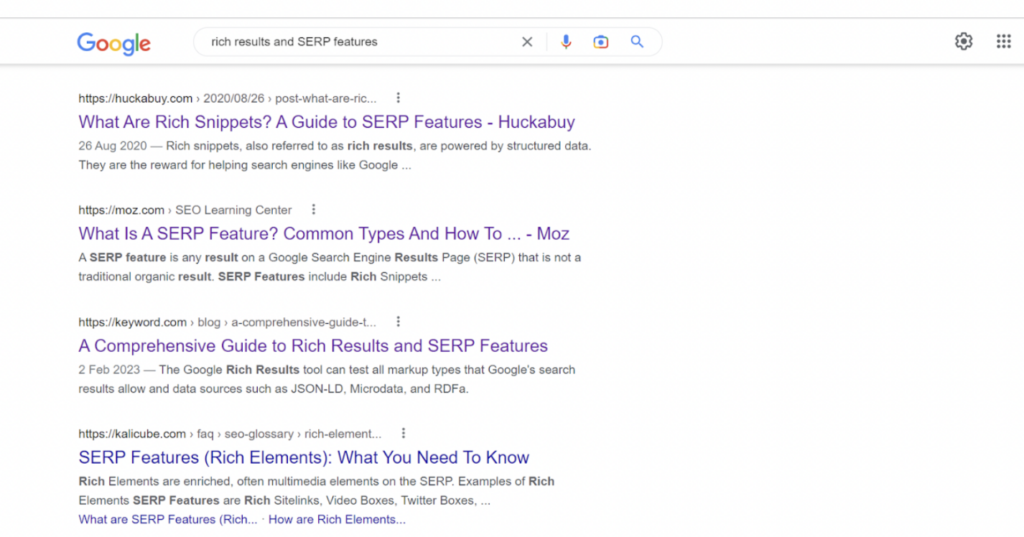Where do you hide a dead body? On the second page of Google.
Why? Because it’s a place where no one looks.
Do you remember the last time you clicked on the second page of Google while searching for a product or answer to a question? Perhaps you changed your search query before you got there?
Yip, we’re all in the same shoes.
According to recent Google search statistics by Backlinko in an analysis of 4 million Google search results, just 0.63% of people click on the second page of Google. There is no doubt that search engine users change their search terms if they don’t find what they are looking for. This stat increasingly emphasized that the actual organic traffic resides on the first page of Google, people trust the businesses listed there.
If you want to build a successful business online, irrespective of the field, you need to rank on the first page of search results, especially on Google. In fact, a recent study shows that 41% of people use a search engine to find local businesses, and 71% do so for B2B services. So, if you want to be found, you need to show up on the first page.
This article will discuss how to climb in page ranking positions from the second page to the first page of Google by implementing some brilliant SEO techniques.
Before we figure out how to climb from page 2 of Google to page 1, it would be best to examine the benefits.
The Benefits of Moving from Page 2 to Page 1 on SERPs
The importance of ranking on the first page of Google is not about the euphoria that comes with seeing your website as the first but the mind-blowing benefits accompanying it.
Let’s examine a few benefits:
1. Increases Site Visibility
According to a report by Internet Live, Google processes over 99,000 searches every second. This stat equals more than 8.5 billion searches a day.
Guess what? Over 80% of the dividend from these searches goes to websites that rank on the first page of the search results. So being on the first page positions your site before potential customers and enhances your business’ exposure.
2. Increases Organic Traffic
Do you know your website gets over a 143% jump in traffic if it moves from the second page to the first page on SERPs?
Also, the reverse holds! There is a drastic decrease in traffic if you fall off from the first page to the second page.
A recent study shows that the first organic result in Google Search has an average click-through rate of 28.5%. Ranking on the first page of search results equals more CTR and organic traffic.
3. Improves Authenticity
There is a science and a method to how websites are ranked in the field of SEO. However, an elusive quality appears with first-page Google results and develops into a psychological game based as much on reputation as it is on actual results.
Let’s consider a user searching for a guide on rich results and SERP features. Google provides a list of sites that covers that topic for that user.
However, that user naturally focuses on the sites on the first page of the search result. There is an inherent sense that websites ranking on the first page are the leaders in the industry.
Interestingly, the user will likely click on our website because we rank on the first page for this search term.
With all said and done, ranking on the first page of search engines creates a positive business image. It tells potential clients that your site is reputable, genuine, and authentic.
4. Improves Leads and Sales
Your prospects are at your fingertips, but your website needs to be easily accessible. One of the best ways to generate more leads and sales is by ranking on the first page of Google.
Note: You must create content that answers your target audience’s queries. Through this process, you reduce your website’s bounce rate and likely turn your visitors into leads.
Moving from the second page to the first page of search results is like relocating from a dilapidated old cottage to a colorful Victorian house in San Francisco.
Without further ado, let’s discover how to move your website from that no-man land to the limelight.
How to Take Your Rankings From the Second to the First Page
1. Find underperforming keywords
A successful SEO campaign starts with keyword research. In fact, SEO experts spend most of their time on keyword research.
According to Search Engine Journal’s State of SEO 2021, 36.3% of SEO professionals apply most of their time to keyword research. This means keywords are the foundational factor to ranking on search engines.
If you are getting poor results on SERPs, you must retreat to your keywords. However, tracking your low-ranking keywords can be daunting. You can use a keyword tracking tool like Keyword.com to ease the stress off your head. This tool features a rank tracker API that provides accurate keyword rank tracking.
2. Extract the Most Valuable keywords
Once you collate your underperforming keywords, the next step is to filter your data and focus on keywords that can generate the desired traffic and scale up the rank.
In a perfect world, you would rank at the top of the search engine results for every keyword in your industry. However, to make the most efficient use of your resources, you must concentrate on the keywords that will increase your chances of SEO success.
Here are a few categories of keywords you can remove from your extracted data:
– Keywords not generating any traffic: If your website is already moving up the result page for some keywords in your list but isn’t generating any traffic in return, consider taking them out of the list.
– Keywords not satisfying searchers’ intent: Google’s primary goal is to help their users’ intent. In their recent edition of Quality Rater Guidelines, understanding and satisfying user intent was a priority.
In addition, Backlinko said, “If your page doesn’t satisfy search intent, it is not going to rank.”
3. Optimize an Existing Page
Now you have a perfect list of your underperforming keywords. The next step is to analyze the results in the top spots.
For example, if you have a page on your website that ranks on the second page of Google’s search results for the keyword keto recipes.
What you have to do is search for this keyword on Google and analyze the top ten results.
What are the things to consider?
# Examine the topics those pages consider that your page doesn’t.
# Consider the word count of those content pieces.
# Check if they produce more captivating content than yours.
# Take a look at their SEO elements (meta titles and descriptions, internal and external links, alt images, etc.)
# Analyze the websites they are linking to, and more.
Other tips
– Go to Quora and Reddit platforms to determine what people are asking on that search term.
– Check Google’s People Also Ask results for that keyword for questions people ask around that search term.
What’s next?
Use these ideas to develop improvements on your page that will help increase your chance of ranking higher on the search result. Then, edit your page to make it better than other content pieces on the result page.
4. Create a New Page
If the keyword you are ranking for isn’t related to the topics of the pages that rank on the first page, you need to create a new page that revolves around that keyword.
For example, if your website is ranking on the second page for the keyword “LinkedIn profile tips.” And the page’s title is “How to Research LinkedIn Keywords for Job Search.” Obviously, the topic is not related to the keyword. This practice increases the website’s bounce rate and affects its ranking.
Alternatively, you can create a well-detailed page for the keyword LinkedIn profile tips with a title like How to Make Your LinkedIn Profile Stand Out. Afterward, you create an internal link in the ranking article that points to the new content. So when you talk about the strategies to get a job on LinkedIn, you can direct them to read the recent article.
When creating the article, don’t forget to analyze the page ranking on the first page.
5. Track Your Progress
It’s expedient that you monitor the effects of your SEO efforts to know your website’s performance on search engine result pages. Interestingly, you can use a keyword rank tracker to analyze the position of your keywords per time.
Any effective keyword rank tracker provides a thorough overview of how your SEO effort affects your rankings and warns you of any unexpected drops or surges you may need to address. You can use a tool like keyword.com for efficient results.
Keyword.com is best for tracking keyword positions. In addition, it is a fast and accurate keyword rank tracker that provides insights on how to grow your traffic, outrank your competitors and dominate your niche. Sign up free and get started with Keyword.com rank tracker today!
Whether you are monitoring the position of ten keywords or hundred keywords, this tool provides unlimited data pulls of your keywords rankings on result pages. Most importantly, you can determine how often you want the reports delivered to your inbox or email.
Final Words on moving your web page rankings from page 2 to page 1 of Google:
The ball is in your court!
You have the tips for moving your site from page #2 to page #1 of the search results.
If you use these tips, you will start ranking on pages #5, #6, and #3, and gradually to page one.


